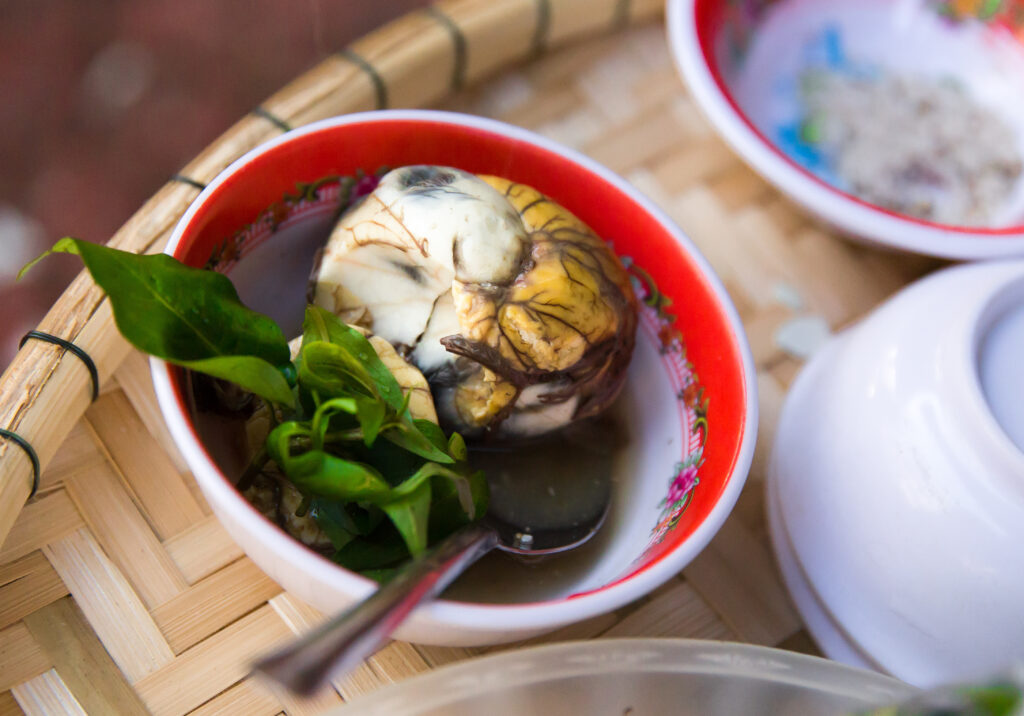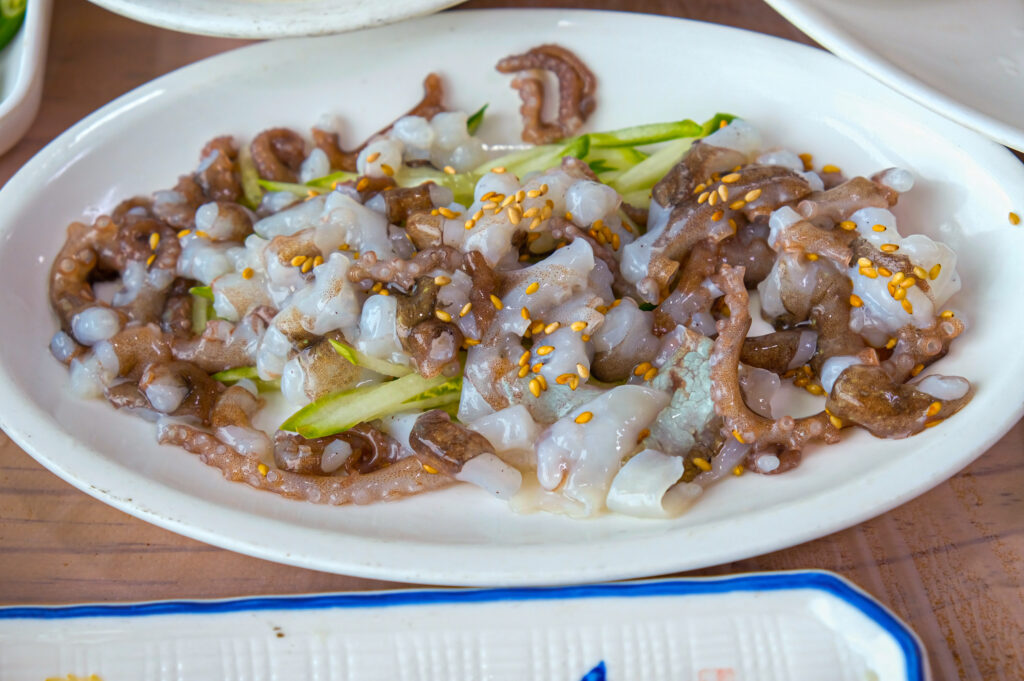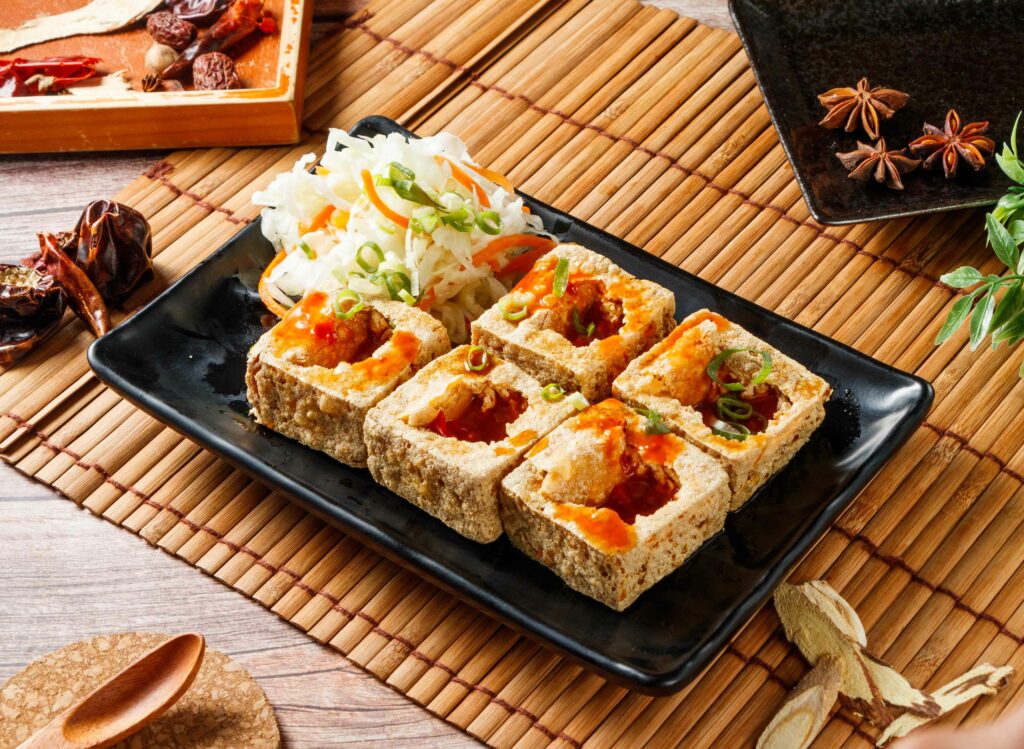
All around the globe, the eating habits of some can sometimes intrigue, even disgust others. Head for the countries of Asia, particularly East Asia, to discover the most unusual culinary specialties and curiosities. From the famous durian to the luxurious yànwō, these "strange" dishes and foods will continue to surprise you. To the most adventurous travelers: bon appétit!
1- Durian

Although durian isn't "strange" in the strict sense of the word, this fruit is world-famous for its stench. Durian is mainly harvested and eaten in Southeast Asia, but can also be found in South America and the Pacific Islands. This large fruit with its hard shell filled with white pulp is said to taste like almond custard. To taste it, however, you need to be brave enough to get past the smell. Some say it resembles that of a "rotting corpse".
2- Natto, a fermented soy dish

Straight from Japan, this traditional dish made from fermented soybeans isoften accompanied by plain rice , and many Japanese eat it for breakfast. This dish is particularly rich in K2 vitamins and has beneficial effects on intestinal flora. More than its taste, it is above all its slimy appearance and the smell of fermentation that could repel unaccustomed consumers.
3- Eat a cobra heart

Cobra heart is eaten in northern Vietnam, in the village of Lê Mât, renowned for its snakes. A veritable culinary showpiece, tradition dictates that a live cobra must first have its throat slit and its blood drained before its heart is ripped out. Still beating, the heart is usually placed in a glass of alcohol and drunk in one gulp. This practice is said to have aphrodisiac effects, and the consumption of reptiles more generally conveys a symbolic image of power.
4- Sannakji, one of Asia's strangest specialties

The sannakjisannakji, also known as sannakji hoe (the word "hoe" referring to a raw meat or fish dish) originated in Korea. This dish is prepared with nakji, a small octopus that the cook cuts up alive. The raw pieces are then lightly seasoned with sesame seeds and oil. The special feature of sannakji is that the pieces of octopus are always wriggling around on the plate when served.
The article to read discover also the best culinary specialties to enjoy in South Korea.
5- Chòu dòufu, or "stinky tofu

Mainly eaten in China, stinky tofu is also found in Taiwan, where it's very famous, as well as in Laos, Cambodia and Korea. This fermented tofu dish has a lingering odor and a taste similar to strong cheeses such as Munster. Depending on the region, you'll find several variations with different shapes and flavors.
6- Strange Asian specialties: Balut in the Philippines

In the Philippines, balut may seem repulsive to Western travelers. This snack found in the country's street food scene is sold mainly at dusk. This duck egg, incubated for three weeks, or less depending on the desired consistency, is steamed and served as is, still in its shell. You'll find the fetus whole and well-formed, head, beak and feathers clearly visible.
7- Yànwō, a delicacy of Chinese cuisine

Very popular with gourmets in Asia, yànwō, or "swallow's nest", is actually a mucus secreted by a subspecies of swifts to build their nests. Its rarity and many virtues make it a luxurious delicacy, much sought-after in Chinese and Vietnamese cuisine. It is used to make a soup called"bird's nest soup", despite the controversial nature of the product. The birds that make these nests are now endangered species.
8- Tuna eye, one of Asia's strangest specialties

Considered a true delicacy in Japan, you'll find tuna eyes in izakayas. These casual after-work pubs serve them sautéed, braised or in a cocktail known as"tuna tears". Once cooked and accompanied by soy sauce and mirin, the eye becomes soft and can easily be sucked out.
9- Eating fugu

Better known as puffer fish or puffer fish, fugu has become the subject of much controversy. A sought-after delicacy in Japan, it is also known for its dangerousness. It contains a toxin, tetrodotoxin, which can be fatal if not properly prepared. Certain regions of the country are famous for their fugu. Such is the case of Shimonoseki, a town called "the capital of fugu", where highly respected chefs have handed down the practice of preparing the fish for generations.
10- The hundred-year-old egg

Hundred-year-old egg is a dish straight out of China. Most of the time, it's a duck egg that is left to age for several weeks or months, depending on the method of preparation. The egg is macerated in a mixture of salt, tea leaves, mud, rice and ashes. At the end of maceration, the yolk turns green and takes on a creamy texture, while the white becomes brown and translucent.


